The treasured sari
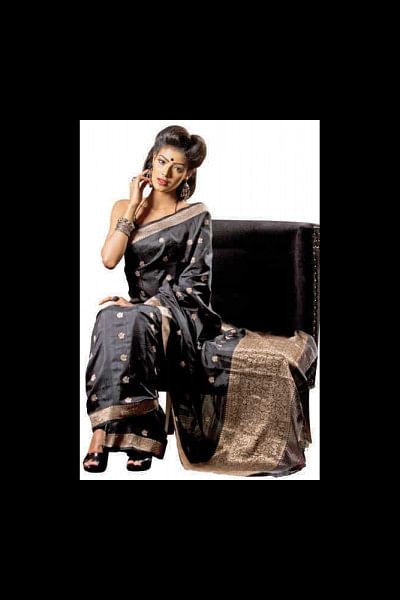
A sari is an unstitched material and that exhibits a woven pattern. The woven design on a sari is placed in specific intervals following the three dimensional practiced wrap. The sari involves pleating and draping the material on the body and the end piece that simply hangs.
Most times it is the simplest patterns that make the statement. The heirloom saris are for keeps and usually timeless for its unfading look and design orientation. This masterly excellence in the design makes old saris very special.
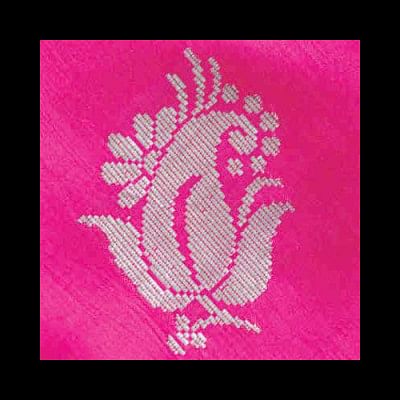
Benarasi
In Bengal, silk saris in the past were synonymous with Benarasi. Until recent times these were brought from Banaras -- one of the rich weaving craft centers of India, famous for brocade saris. Exclusive varieties of the saris are made of silk warp and silk weft, on plain/satin ground base, brocaded with extra weft patterns in different layouts introducing butis, bells, creepers, buti in ground, border and end for a beautiful layout.
Historically in South Asia Banaras achieved fame for over 500 years. In the ancient time Banaras was famous for the weaving of cotton sari and dress materials, but slowly switched over to silk weaving, during the Mughal period around the 14th century, weaving brocades with intricate designs using gold and silver threads. The heirloom saris were specifically from Banaras as they were mostly wedding saris.
Here are some examples of kinds of saris that were popular back then, and still continue to be special today.
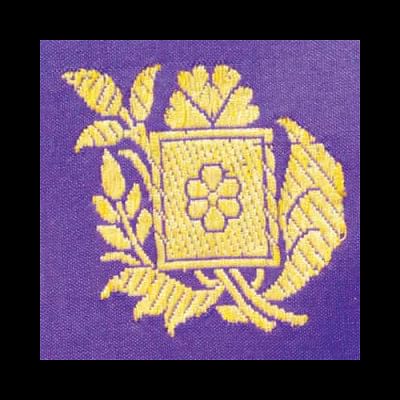
Brocade
Brocade refers to those textiles where patterns are created in weaving by transfixing or thrusting the pattern-thread between the warp. In regular weaving the weft thread passes over and under the warp thread regularly. But when brocade designs in gold, silver, silk or cotton threads are to be woven, special threads are transfixed in between by skipping the passage of the regular weft over a certain number of warp threads and by regularising the skipping by means of pre-arranged heddles for each type of patterning.
There may be several sets of heddles so arranged that on different occasions, they raise and depress an irregular number of threads in turn, as required by the exigencies of the pattern. When we spoke of gold or silver threads in the past we spoke about these special heirlooms. It is to be understood that the gold threads are actually only silver threads with gold polish and that these threads are obtained by closely winding extremely fine gold or silver wire around a silk thread.
On many occasions therefore pure brocade was used for trappings, hangings and furnishing. Only that material in which the zari patterns were scattered was true brocade and this was used for clothing such as saris.
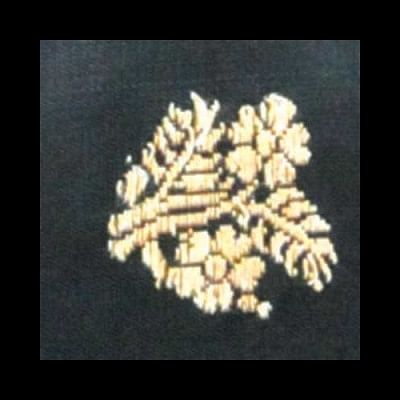
Figured Muslins of Banaras
This is a technical variety of brocade or the 'figured muslin'. Traditionally woven in Banaras it may be considered to be one of the finest products to come out of the Banaras loom. Here silk fabric is brocaded with cotton and rarely with zari threads. The motifs are woven by transfixing the pattern thread between a varying numbers of warp threads in proportion to the size of the design then throwing the shuttle to pass the regular weft. By repeating this process, where in the size and placing of the cut-thread is in accordance with the character of the pattern, the weaver produces intricate designs. Some of the traditional motifs are chameli (jasmine), panna hazar (thousand emeralds), genda buti (marigold flower), paan buti (leaf form), tesri (diagonally striped), etc.
The most attractive design feature of this sari was kona or a corner-motif having a floral mango motif. This has its own special character of binding in the figured designs on ground fabrics using extra weft design thread. It is a beautiful ornamentation.
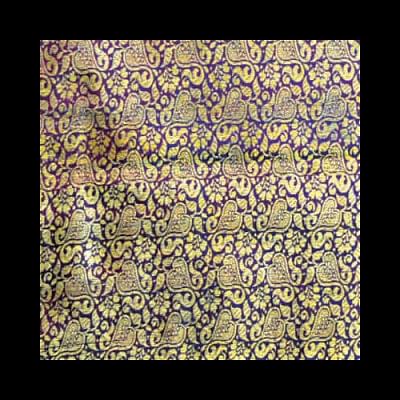
'Jungla' Benarasi
Brocade weavers of Banaras have often endeavoured to add a sense of gaiety and festivity by brocading patterns in colourful silk threads amidst the usual gold and silver motifs. Jungla wildly scrolling and spreading vegetation motifs are among the eldest in Benaras brocades.
Many saris are embellished with beautifully contrasted gold-creepers and silver flowers of the foliage motif. The borders have brocaded running creepers in silk and gold and silver metal threads. The end panel is a combination of motifs of the borders and condensed in a field. All over latticed designs to get the stylish work of the saris and also used meena work for the decoration of the fabrics. This exclusive sari is meticulously worked, and is widely used in the wedding season.
Tanchoi sari
Using a technique similar to that of brocade, weavers of Banaras weave saris using colourful extra weft silk yarn for patterning designs. This variety is known as tanchoi. This satin weave is brocaded with elaborate motifs from the Jamawar shawl tradition from Kashmir, the characteristic feature of which was paisley motif, often elaborated into a maze which would look kaleidoscopic in character.
The field has densely spread miniature butis of Jamawar style paisleys. The end panel has large motifs of multiple paisley forms -- one growing out of the other. The border as well as the cross-borders of the end panel has miniature paisley creepers.
Tanchoi sari was extremely popular in the then East Bengal and many good varieties are found in our heirlooms today.
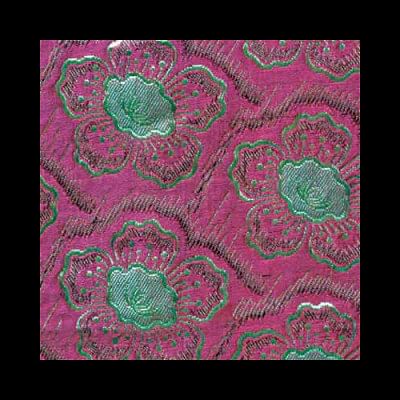
Tissue sari
The renowned zari brocade weavers of Banaras have evolved a technique of weaving tissue material, which looked like golden cloth. By running zari in weft a combination of zari and silk in extra-weft (pattern thread) and silk in warp, the weave of this sari is densely patterned with golden lotuses floating in a glimmering pond. The 'drops of water' are created by cutwork technique. The borders and the end panel have diamond patterns enclosed by a border of running paisley motifs.
Tissue saris were most popular as wedding saris in the past. Tissue saris have a glazed, shining character due to the use of real gold zari/silver zari. Good examples of heirloom tissue saris remain today.
Buti sari
The most striking feature of this silken sari is that it is brocaded with pattern threads of gold, silver and silk. Due to darker shades of gold and lighter shades of silver, this variety of patterning in brocade is conventionally known as Ganga-Jamuna, indicating the confluence of these two rivers whose waters are believed to be dark and light respectively.
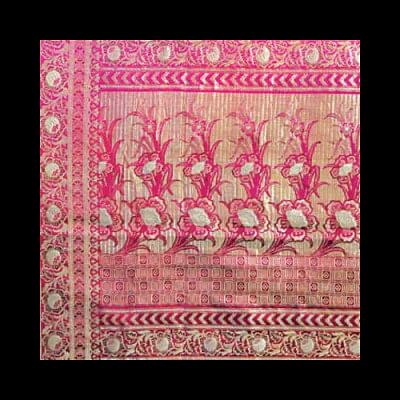
The end panel has a row of arches, in each of which a bouquet of flowers is placed. Slightly smaller and variegated motifs are placed all over the field. The buti sari is a rich Banaras sari in high traditional pattern and design, locally popularised such as the Baluchaributi with the use of real gold and silver zari and katan silk in the weft.
I have elaborated on the silks from Banaras as in most heirlooms we will find saris made from this particular regional loom. The high tradition of silk weaves and the close proximity to Bihar from East Bengal clearly meant that there was a flourishing trade of such merchandise for the past 300 years or more.
There are of course other age-old traditional saris such as Jamdani, Tangail, Baluchari, Bishnupur, Bheeti, and Gorad in Bengal with beautiful workmanship but these saris were not easily conserved and therefore fragile and lost over time. While others like Kanjeeverum, Paitni, Patola and Lehryas are also royal weaves they were not so popular in East Bengal in earlier times but are presently desired in trousseau collections.
Photo : Sazzad Ibne Sayed
Model: Riba
Wardroble: Maheen Khan's collected heirloom sari
Make-up: Farzana Shakil
Photo of Motifs Courtesy: Maheen Khan

 For all latest news, follow The Daily Star's Google News channel.
For all latest news, follow The Daily Star's Google News channel. 



Comments